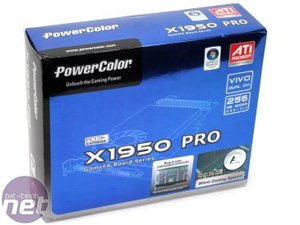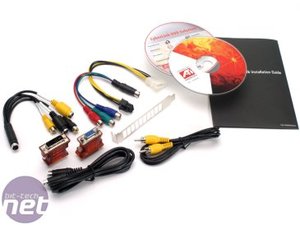
PowerColor Radeon X1950 Pro SCS3
Core Clock: 575MHzMemory Clock: 1370MHz
Price (as reviewed): £140 (inc VAT) -- estimated
Availability: Soon
Every man and his dog seems to be waiting around for mid-range DirectX 10 parts from both ATI and Nvidia, but neither has actually announced anything on that front yet. If you’re not looking to upgrade to Windows Vista any time soon though, there is still plenty of life left in Windows XP.
You see, the clever bods at Microsoft decided to make DirectX 10 a Vista exclusive feature and thus if you want to experience some of the marvels of DirectX 10, you’ve got to buy a copy of Vista too. To most, the cost of Vista is something they hadn’t really taken into account when they’re planning on upgrading to play some of the soon-to-be-released DirectX 10 games in all their glory.
Taking all of this into account, you could argue that DirectX 9 hardware is still a viable proposition in the mid-range...
Typically, when ATI or Nvidia launches a new product, all of the board partners sell essentially the same card with no changes to either PCB design or heatsink design. The only way for them to really differentiate themselves at launch is to offer better value for money than the competition in what has turned into an incredibly volatile marketplace.

Today, we’re having a look at one such product – PowerColor’s Radeon X1950 Pro SCS3 Edition. However, before you stop reading because you’ve seen it all before, those funny letters tacked on the end actually mean something, as this one runs in complete silence. By that token, PowerColor hasn’t just implemented one of the many active cooling solutions on the market that claim to be capable of silent operation – this design is actually fanless... Woahh < /neo>
At a first glance, the fins on PowerColor’s Radeon X1950 Pro SCS3 heatsink look a bit like some kind of grill when they’re laid down flat. Maybe there’s room for a bit of a fire under the heatsink fins, making it ideal for flame grilling your meat. Despite this being the case, we sadly didn’t get the chance to test PowerColor’s Radeon X1950 Pro SCS3 as a barbeque. Being the bunch of geeks that we are, we didn’t have any streaks of bacon in the office fridge while we were testing. Hopefully, next time, we’ll remember to pop to the supermarket on the way to work.
Anyway, we digress... let’s find out what PowerColor’s Radeon X1950 Pro SCS3 can serve up (no more, please – Ed.)...
Bundle:
The box is a typical PowerColor design, with all of the right information on there, minus the sometimes garish fantasy character that most Far Eastern hardware manufacturers seem to don their boxes with. The box makes mention of the fact that PowerColor has implemented a silent cooling solution, and rightly so too. Inside, you get a hard copy quick install guide, a selection of cables and a couple of CDs.The wide selection of cables is included because the card sports a VIVO connector on its PCI bracket. The assortment includes a Composite/S-Video In/Out dongle, S-Video and Composite cable extensions and a Component cable. Finally, there are two DVI-to-VGA converters and a 6-pin PCI-Express power adapter to round off the cables and connector assortment.
In terms of software, PowerColor includes CyberLink’s DVD Solution disk that includes PowerDVD, PowerDirector, PowerProducer, MediaShow, Power2Go, MusicMatch, and trial versions of PowerDVD Copy and PowerBackup. PowerColor also includes a driver / utility CD but unfortunately, there are no games included in the box. Finally, before we move onto the card you’ll notice that there are no CrossFire connectors included, but we’re not too bothered about that, as you’ll soon find out over the page...

MSI MPG Velox 100R Chassis Review
October 14 2021 | 15:04










Want to comment? Please log in.